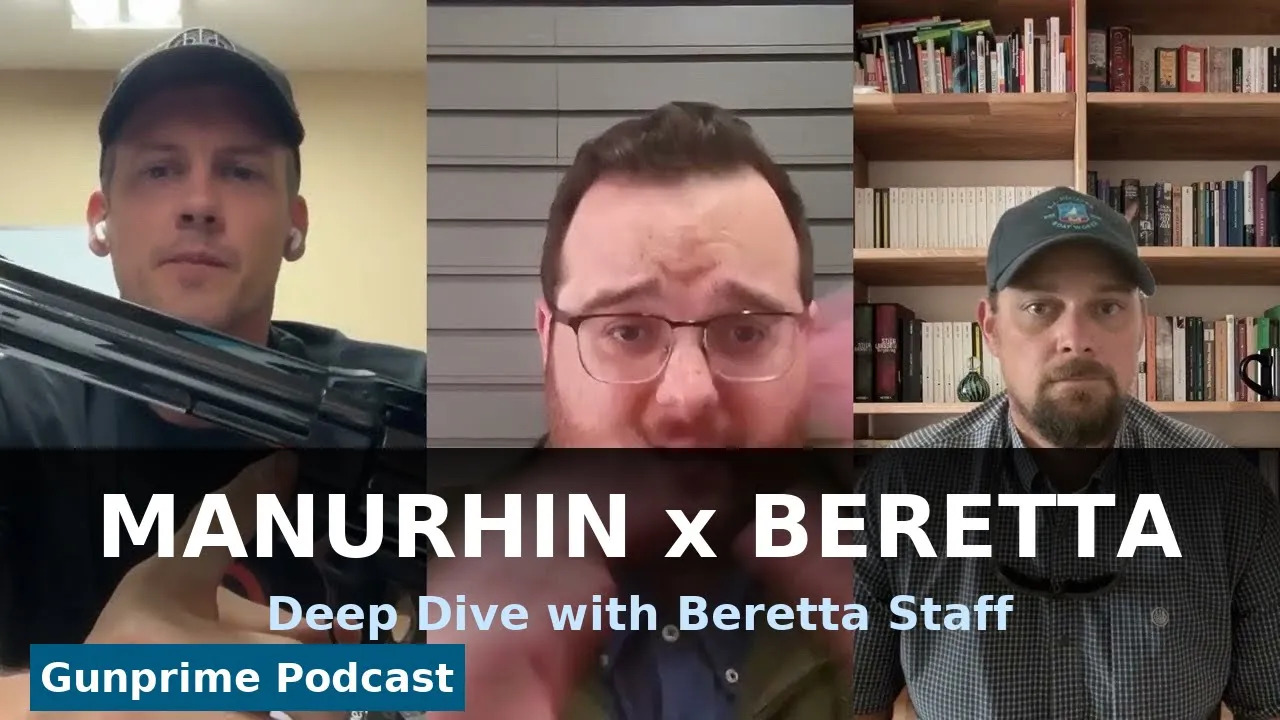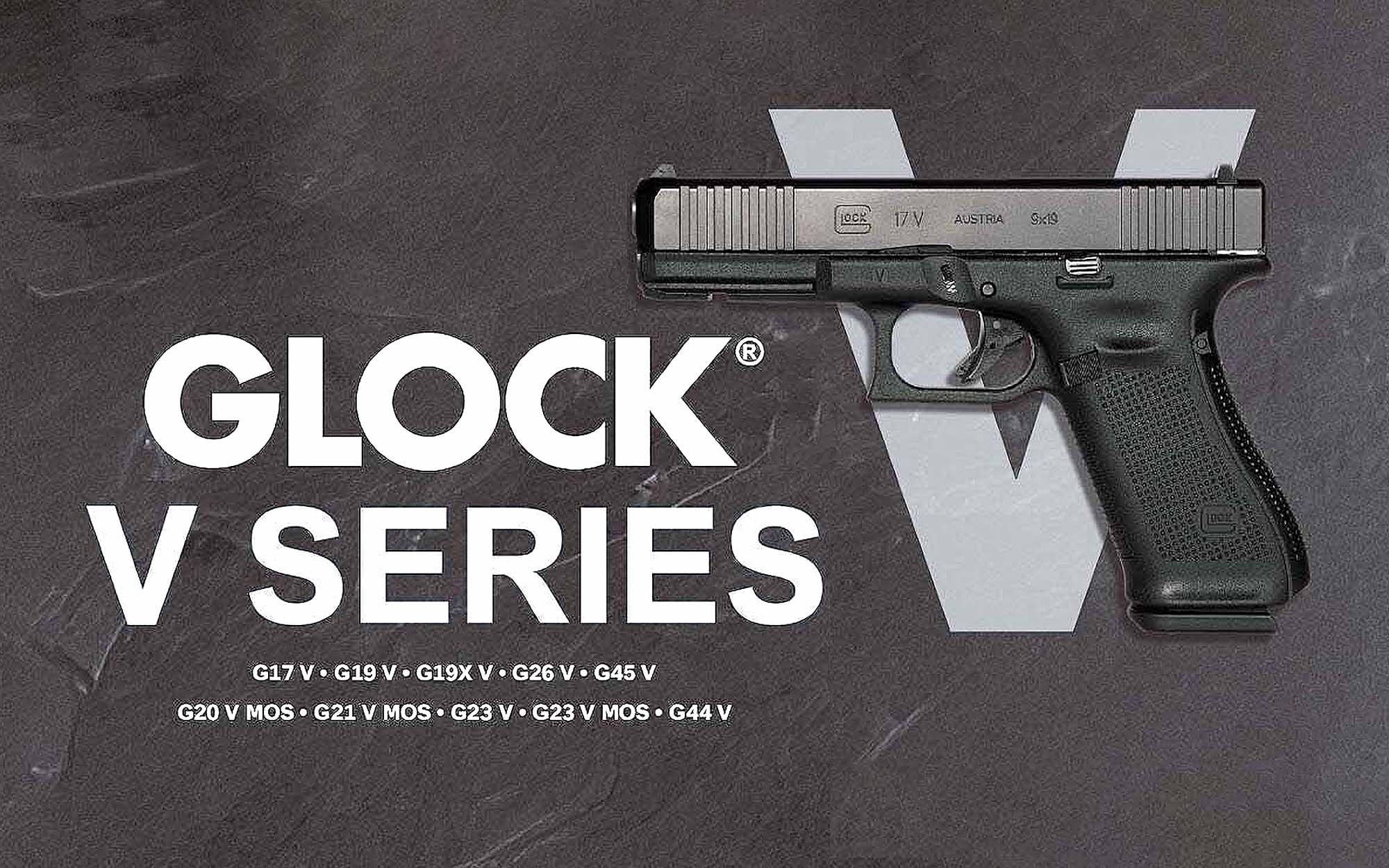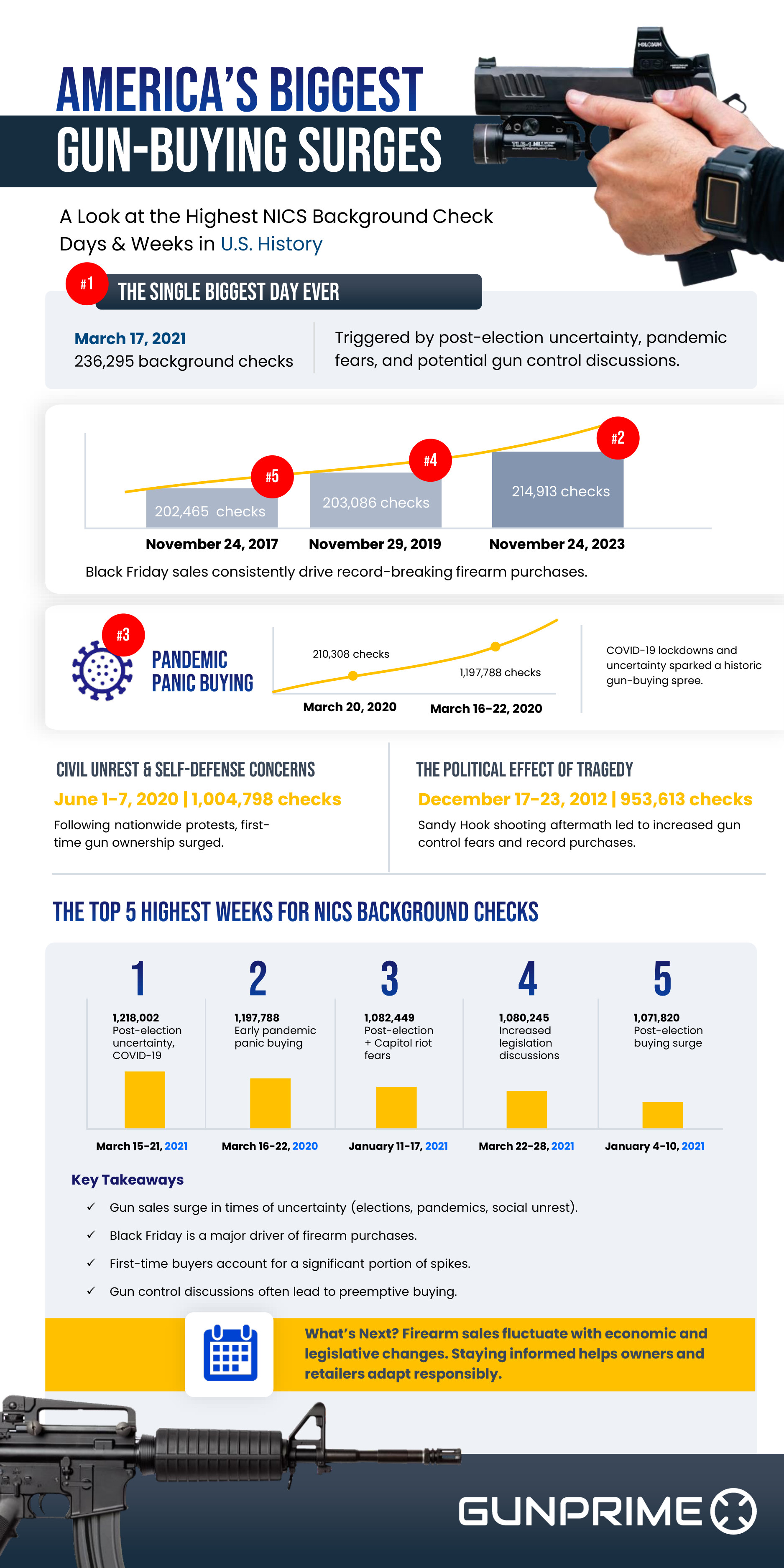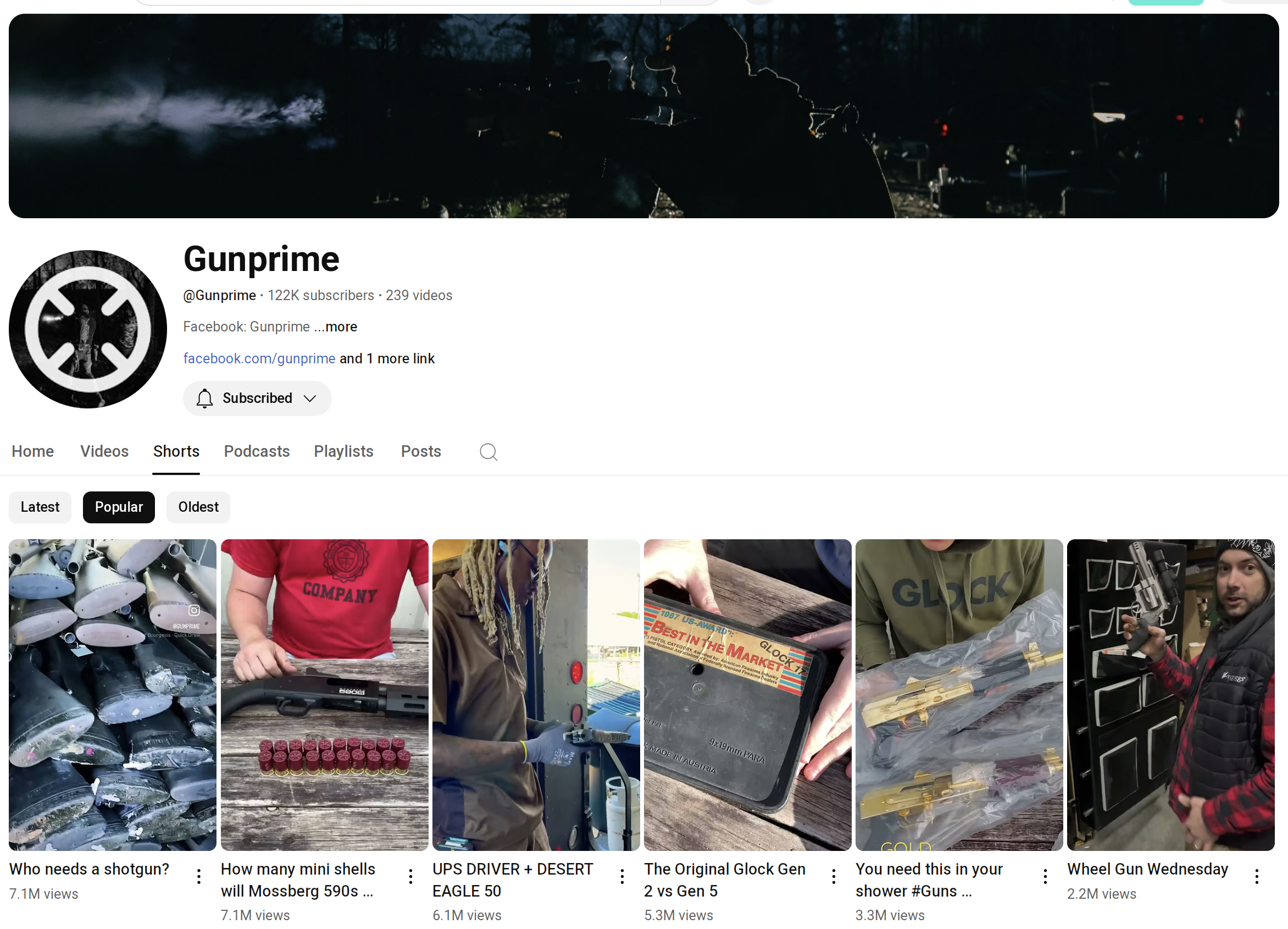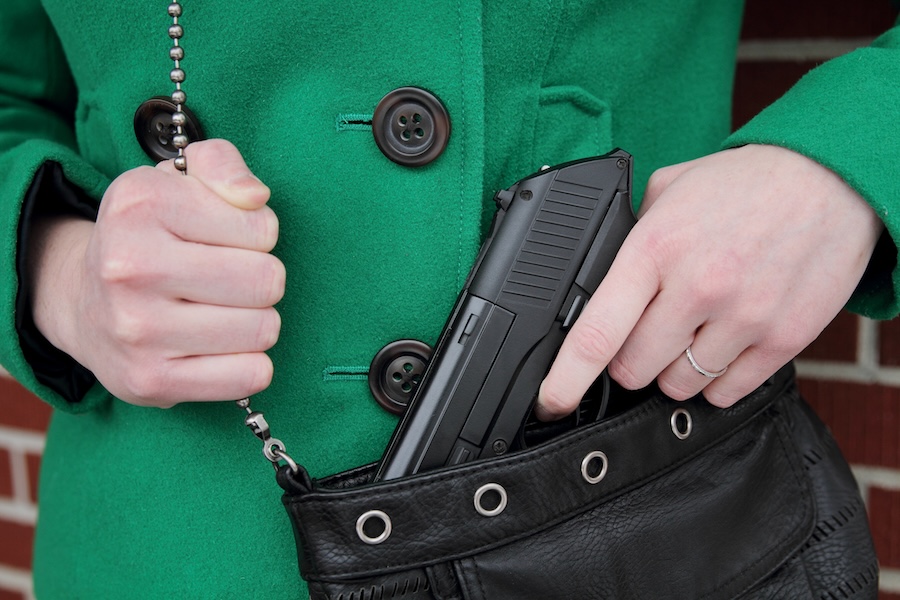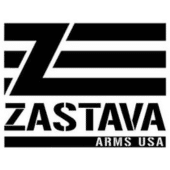Shootability: How well can you shoot the gun? Can you get a good purchase on the firearm?
The ability to effectively employ your firearm at the drop of a dime is one of the most important aspects of choosing a concealed carry firearm. Factors such as the amount of gripping surface, firearm weight, and caliber selection play a role in one’s ability to shoot a firearm. Generally, a larger gun in a mild caliber, like 9mm, will be the best shooting gun. A large gun is usually easier to shoot, even for those small in stature. My girlfriend is five feet tall, 100lbs, and her favorite gun to shoot is a Glock 34 because of the soft recoil impulse. Unfortunately, a 40-ounce full-size pistol is not concealable for most people like my girlfriend in their everyday lives. We will review the key factors to help you weigh the pros and cons of concealed carry pistols in shootability.
Gripping a Pistol
When it comes to gripping a pistol, most shooters agree on three things that affect the shootability of the firearm. Those three factors are the amount of surface area for the support hand, the ability to use pinky pressure, and the ability to get a high purchase on the backstrap of the firearm. The first factor is that the more surface area I can put pressure on the pistol with my support hand, the better the potential for reasonable recoil control. The picture below is of a full-size Glock 17 pistol.
In this picture, you can see that with this full-size Glock 17, there is plenty of space for the support side hand to grip onto and that an adult male can achieve complete contact with his pinky.
Due to the grip size of the Glock 17, almost everyone will be able to get a good firing grip on the gun, as shown above.
Moving on to the next pistol category, you can see we used a compact Glock 19.
On the Glock 19, there is still much room for the support hand to grip, but there is still less gripping surface than the Glock 17. If you look closely at the strong-side pinky, you can see that part of it is hanging off the pistol, which isn’t ideal for recoil mitigation but can still work with training.
Looking at the picture above, you can see that one can still achieve a good firing grip despite the loss of gripping surface on the Glock 19.
The last category of pistol we will cover is the sub-compact category. For this demonstration, we used a short butt Sig Sauer P938 pistol.
As you can see on the sub-compact Sig Sauer P938 pistol, there is significantly less gripping surface for both the support-side and strong-side hands. The pinky on the strong hand is entirely free of the pistol grip negating the ability to get proper pinky pressure. If one trains, one can overcome some of the challenges of shooting this pistol, but it will never be as shootable as the two larger pistols above.
Remember that smaller is not necessarily better when choosing a concealed carry pistol. When you choose a smaller gun, you sacrifice shootability; when selecting a larger handgun, you may sacrifice concealability. Think long and hard about your decision as your life could very well depend on it.
Pistol Weight
Heavy guns reduce felt recoil in your hands, making themselves more shootable for many people. This phenomenon is why you often see competition shooters opting for heavy guns and why many manufacturers of striker-fired pistols are making heavier guns like the M&P9 Metal below.
Heavy guns do not come without their own set of trade-offs. Some users find heavy guns harder to swing from target to target in transitions. Heavy guns are also more challenging to carry all day. A strong belt and a good holster can solve some of these problems, but the weight can still make it taxing on the body, causing comfortability issues. Heavy guns can be better, but it depends on the individual, and one must weigh the pros and cons of varying pistol weights when choosing a concealed carry pistol.
Caliber Selection
Smaller calibers lend to softer shooting experiences but can lead to other issues. A semi-automatic 22lr pistol will have less felt recoil than a 9mm, but at the cost of less terminal performance and reliability. A 10mm handgun, on the other hand, will have better terminal performance than a 9mm, but it will have more felt recoil, and the ammunition will likely cost more for the consumer. Most professionals agree that 9mm is a good balance for concealed carry as it allows for fast follow-up shots and has adequate terminal performance on target. For the most part, handgun cartridges do not have stellar terminal ballistics, so the trade-off for choosing 9mm is not very severe. Yes, handguns like a model 29 Smith and Wesson chambered in 44 Magnum have much better terminal ballistics than a 9mm. Still, it will likely be harder to carry, more challenging to shoot, and harder to shoot means less accurate for your average person. Please choose what you want, but I am sticking with 9mm. I can buy it anywhere, it is easy to shoot, and it is a cheap option that allows for more practice.
Concealability: Can you easily hide the gun on your person? Is it the right size and weight for you?
Smaller handguns are often easier to conceal, but that is not always the case. When considering how concealable a pistol is, you must consider the length of the slide and the grip. If you carry inside the waistband (IWB), you will probably want a smaller grip and a medium to long slide length. The grip that sticks out of your waistline is the most likely to print (be noticeably visible). People with wide torsos can use a more extended grip without printing, but a shorter handle will work best for people with a sleeker physique.
For IWB carry, most will want to use a medium to long slide. A longer slide will not print easily in IWB because it sits down inside the pants. If you have too short of a slide, IWB guns will tend to protrude outwards, causing the pistol to print. This concealed carry consideration is known as the keel principle.
Picturer from Phlster Holsters
Boats use a structural beam called a keel under the boat beneath the water surface to keep it from tipping over. If you think of your belt line as the surface of the water and the slide of your pistol as the boat's keel, then you can see why you must balance how long the slide is to prevent printing from protruding outward. If you like carrying a shorter pistol, you can counteract the keeling effect by using a wedge to push the gun back into the body, but having a longer slide will most likely be easier to conceal, as counterintuitive as that may seem.
Image From Phlster Holsters
The only downside to a longer pistol slide depends on the position you carry; the length may affect the comfort, or if you use too large of a wedge, it may cause bulging below the waistline. Like all things in life, it comes down to balance. If you skew either end of the spectrum when choosing a pistol, it may cause a printing issue.
If you carry your pistol with the slide pointing at your hip crease in a 2 O'clock position, it may cause discomfort when lifting your leg or sitting. This can be remedied by carrying more centerline but is a consideration nonetheless.
If you carry outside the waistband (OWB) with a cover garment, you would likely want to choose a short butt and short slide pistol. Depending on the length of your cover garment, having a long firearm may lend itself to printing from the bottom of the garment when raising your arms or bending over.
Having too long of a grip can cause it to bulge out the back when doing similar tasks. Buying a pistol for concealed carry is more than going online and picking one out. You have to consider how you will carry the gun.
Body Composition: Does your Concealed Carry Pistol Fit your Body Type?
Picture from Amazon.com
Everyone has a unique body type; therefore, the optimal concealed carry position will differ amongst varying body types. To determine the ideal grip length on your concealed carry pistol, you will need a measuring tape and a grasp of some concepts I learned from Phlster Holsters. The two concepts Phlster uses to determine concealable areas on the body are valleys and peaks. All people have valleys and peaks on their bodies, no matter how large or small. A valley is a flat or recessed area on the body that leaves space between clothing and the body. A peak is a prominent point on the body that protrudes, often touching clothing and leaving little to no space.
To optimally conceal a firearm, one must carry it in a position that sits the gun into a valley. For large individuals, the peaks typically fall into the 12 O’clock position near the belly button, whereas for smaller individuals, peaks usually sit at the hips closer to the 3 O’clock position. Now that you understand peaks and valleys, it is time to determine the optimal grip length for your concealed carry pistol. To determine the optimal grip length take your tape measurer and measure the size of the valleys between your peaks of where you would like to carry. Take that number and measure the length of the grip from the bottom of the magazine to the top of the slide. Any pistol that fits within the measured valley on your body will be the optimal choice for concealment. If your favorite firearm does not fit into this number, do not fret because other factors would allow you to carry a larger firearm, such as if your lifestyle allows for baggy shirts. Still, I usually recommend carrying the largest gun within the measured valley, but we will check out some other factors that can affect that choice next. Your lifestyle, environment, and skill may change the size of the pistol you want to carry more than concealability. Those factors may lead you to a smaller or larger gun than that measured to fit your body.
Environment: Permissive or Non-Permissive Concealed Carry Environment?
Image from Depositphotos
Does your workplace allow concealed carry firearms? Do people carry negative connotations with firearm usage in your area? Maybe your situation changes based on the different places you frequent. Your environment affects how much concealment you need. I only recommend carrying everywhere that is legally possible, but just because it is legal does not mean it couldn’t sabotage your professional or social life where you live. In permissive environments like the gun shop, I can get away with a full-size Glock 34 without issue. If I print a little bit, it doesn’t matter because I am around like-minded people who do not fret at the sight of a concealed carry firearm. When speaking at events where I know it will make people uncomfortable or where they may call the police in the presence of a gun, I make concealment a priority. You do not need to sacrifice your career or make people uncomfortable carrying a concealed firearm. If you find yourself in a non-permissive environment, take a gun you can hide completely. In today’s world, there are no excuses, as many great options give one optimal concealability without sacrificing accessibility. When concealment is the top priority, I choose the Phlster Enigma holster system. I can carry a P365 with a tucked-in shirt, which completely disappears. I can still access the firearm very quickly if I need to use it. Only you know which environments you find yourself in, so choose accordingly.
Lifestyle: Does Your Concealed Carry Pistol Match Your Lifestyle?
Image from c-eclecticstyle
Do you wear an untucked shirt most of the time, or do you wear a tucked-in polo or suit? Are you active and wear athletic clothes year-round, or do you fancy wearing jeans and flannel? These lifestyle factors affect the type of pistol you want to purchase for concealed carry. If you are a shorts and t-shirt type guy or a gym rat, you might want a lighter gun to put it in an enigma or a holster with Ulti-Clips to hold it up in lightweight shorts. If you are a jeans and thick belt guy, you might want that heavy, larger, and more shootable pistol. Still, If you wear a suit for a living and have plenty of space to conceal it, you might opt for a short slide / short butt pistol to wear OWB. Some people say to dress around the gun, but I feel that most people who start with this mindset end up not carrying as often as they could or quitting altogether. Pick a pistol that suits your lifestyle and train with it!
Reliability: Is Your Concealed Carry Pistol Reliable in your Environment
Today we live in a world where most firearms from reputable manufacturers will serve reliably for concealed carry. You will likely be good if you pick a Glock, Sig Sauer, Smith & Wesson, Walther, CZ, or Berretta. Firearms like a Wilson Combat, Staccato, Dan Wesson, Nighthawk, or other semi-custom or custom guns can also be great out-of-the-box pistols but require more maintenance. Your service-proven designs will likely remain reliable with less care than your custom firearms, but that is not always the case. No matter what firearm you purchase, ensure you can properly maintain it according to the factory procedures. Once you have the firearm, you need to test it by training. Everyone makes a lemon now and then, no matter what manufacturer you choose. I have purchased some of the finest custom shop guns, and they failed me the first time I took them out to a training course. So you need to pick a pistol and test it in the harshest environments you find yourself carrying. If you work outside and constantly get dust and grime on the firearm, then that custom 1911 might not be the best option. Although many custom 1911s are reliable, the maintenance required to keep it that way in that environment would likely be too taxing to accomplish. If you never get dirty, that is a consideration too, but I would err on the side of caution when picking a carry gun and plan for the worst-case scenario. Reliability is the most crucial aspect when picking a carry gun, so choose wisely.
Skill: Are you Skilled Enough to Shoot That Small Pistol?
Smaller, lighter pistols of the same caliber will be harder to shoot than larger, heavier pistols. It is also true that smaller and lighter handguns are less taxing to carry and often easier to conceal. Most people with concealed weapons choose one based solely on comfort and concealability. Do not be one of those people; remember to select your concealed carry gun based on balancing reliability, shootability, and concealability. Max Michel might shoot his P365 with speed and accuracy, but you probably cannot. If you choose a small carry pistol, you will likely need more practice with it, so ensure that your commitment to carrying a small firearm reflects the same level of commitment to training.
Budget: Does Your Carry Pistol Reflect Your Budget?
Just because you have $1,000.00 to spend on concealed carry does not mean you must spend all of it on a pistol. You may not have considered other costs associated with concealed carry. Look at the sample budget below.
|
Sample $1000 Concealed Carry Budget |
|
|
Glock 19 |
$599.99 |
|
Holster |
$99.99 |
|
Ammunition |
$270.00 |
|
Training: Ben Stoeger Dry Fire Book |
$30.00 |
To carry a concealed weapon at a bare minimum, you need a weapon, a means to carry it via a holster, and ammunition. The table above shows a sample $1000 budget for concealed carry. Using this budget, one could purchase the bare minimum and have money for the minimum training (Dry Fire). Still, this budget does not include a concealed carry belt or clothes that would work for carrying a concealed firearm. If you did not have the right belt or clothes and had to work off a $1000 budget, you might need to wait and save up more money or choose a different gun to leave you with more money to spare. Remember that carrying a concealed carry firearm is not just about the weapon but the entire system. Do not get caught off guard by hidden costs.
Conclusion:
Carrying a concealed firearm is a serious endeavor. Manufacturers and influencers throw a lot of insufficient information at new gun owners via marketing campaigns, making it hard to decipher the good from the bad. This guide will help you sift through the crap and prevent bad decisions on choosing a concealed firearm. As you become more experienced, your needs may change, but the factors you should consider when choosing a concealed carry pistol should not. Now that you are armed with the information you need go out and select your gun and start training.
If you want to find some concealed carry pistols click here.
Posted by: Corey Fuller
Corey is a gun guy for Gunprime, the senior security consultant at Fuller Security Solutions, and a partner at Heroes Academy Online. When he isn’t writing about guns he spends time helping schools and businesses bolster their security programs and rolling on the mats with his friends at Heroes Combat BJJ.

